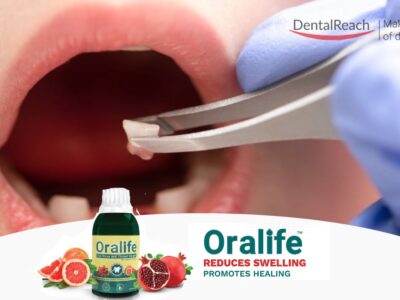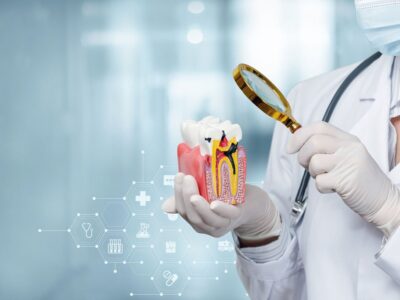Long gone are days when the results of cosmetic dentistry were unpredictable and stressful. By using a proper systematic approach to treatment planning, one can eliminate guesswork and achieve a predictable aesthetic makeover. Smile enhancement is the forefront of treatment planning in the present era of dentistry.
It is not necessary to spend countless hours on a patient in order to achieve that pretty smile. What is required is following the key steps to achieve that aesthetic and functional harmony.
The goal of aesthetic dentistry is to develop a peaceful and stable masticatory system, where the teeth, tissues, muscles, skeletal structures, and joints all function in harmony. ( Peter Dawson).
Step 1: A proper patient interview:
It is vital to develop a good rapport with the patient to understand his personality type.
A proper detailed interview will help to communicate with the patient in a better way and guide in adequate treatment planning. It will help know the expectations of the patient which will lay the foundation of the aesthetic treatment.
But it is also essential to keep in mind that through patient’s primary concern may be a “pretty smile” but we should not forget the dentofacial harmony along with the aesthetic rehabilitation.
Step 2: Diagnostic analysis of the case:
Following are the required diagnostic records for proper interpretation of the case:
- Medical history
- Dental examination
- Occlusion check
- Tmj examination
- Periodontal condition of the teeth
- Complete radiographic series
- Complete photographic series
- Models
Components of an aesthetic smile
The following points are to be kept in mind for a symmetrical, well balanced and functional aesthetic restoration before jumping on to the further treatment:
There are three basic components of a smile:
- The teeth
- The gingival scaffold and
- The lips.
Table: Desirable traits of an attractive smile.
- Teeth
- Colour
- Position
- Silhouette Shape
- Gingiva
- Health
- Harmony and continuity of form
- Lips
- Form of lipline: high, medium or low
- The gingival line follows upper lip contour
- Incisal edge line follows lower lip contour
A smile design should always include the evaluation and analysis of both facial and dental composition.
- Facial composition.
The two critical facial features that play an essential role in smile design are:
- Interpupillary line
It should be perpendicular to the midline of the face and parallel to the occlusal plane.
- Lips
- Dental composition
It is further subdivided into:
- Tooth components
- Soft tissue components.
Tooth components:
- Dental midline
It refers to the vertical contact interface between two maxillary centrals. Evaluation of midline should be done using the philtrum of lip whose centre should match the papilla between the centrals. A discrepancy of around 2 mm is acceptable.
Midline should be:
- a) Parallel to the long axis of the face
- b) Perpendicular to the incisal plane
- c) Should drop straight down from papilla.
- Incisal edge positions
It is determined by:
- Degree of tooth display
When the mouth is relaxed and slightly open, 3.5 mm of the incisal third of maxillary central incisor should be visible in a young individual.
- Proper phonetics.
- Tooth dimensions
- Maxillary central incisors:
They are the focal point of an aesthetic smile. The length to width ratio of centrals should be approximately 4:5.
Proper guidelines for achieving correct proportions in an aesthetic smile can be determined using following formulas:
- Golden proportion
- Recurring aesthetic dental proportion
- M proportions
- Chu’s aesthetic gauges.
However strictly sticking to these formulas are not as important as the visual judgment of a clinician.
- Maxillary lateral incisors:
They should never be symmetrical and are influenced by gender.
- Maxillary canine:
They play a critical role in smile designing as they support the frontal muscles and they also depict the personality of a person ( vigorous and aggressive in masculine and delicate and soft in the feminine)
- Maxillary bicuspids:
They play an essential role in the arch design. They should fill the buccal corridor.
Tooth inclinations
From central to canine, there should be a natural, progressive increase of mesial inclination of each subsequent anterior tooth.
- Maxillary central incisor- Positioned vertically or slightly labial.
- Maxillary lateral incisor- cervical is tucked in, incisal edge inclined slightly labially
- Maxillary canine- Cervical area positioned labially, cusp tip lingually angulated.
- Interdental contact area and point.
Interdental contact area follows the 50:40:30 rule in reference to maxillary central incisor.
Interdental contact point should move apically as we move posteriorly from the midline.
- Incisal embrasures
They should display a progressive increase in depth as we move from central to canine. They should not be very less or very much profound as it may ruin the natural appearance of a smile.
Inadequate depth will give a box-like appearance while extra depth will give unnaturally pointed teeth.
- Sex, age, and personality.
Sex: females have a round, smooth maxillary centrals in comparison to males who have a cuboidal one.
Age: Young centrals have an unworn incisal edge and a defined embrasure whereas aged teeth are shorter with an ill-defined embrasure.
Personality: Long, pointed cusp for aggressive nature while a rounded, shorter cusp of canine for a softer nature.
- Symmetry and balance.
Symmetrical length and width of teeth specially centrals as if they are mirror images to each other.
Also, the smile on both right and left side of midline should be well balanced.
Soft tissue components:
- Gingival health
It should be pink in colour, stippled, firm, and 3mm above the alveolar crestal bone.
- Gingival harmony
Right gingival level and shape are fundamental to maintain the harmony of a smile. Maxillary centrals and canine should have a more elliptical shape whereas maxillary laterals and mandibular incisors should exhibit a more oval shape.
- Cervical embrasure
The most apical part of the restoration should be 5mm or less from the crest of the bone to avoid those black triangles.
- Smile line
The imaginary line along the incisal edges of maxillary anteriors should follow the curvature of the superior border of the lower lip while smiling.
Step 3: Diagnostic wax up
It provides the simulation of the treatment to the patient.
It is defined as Waxing of the intended restorative contours on dental casts for evaluation and planning restorations. It acts as a foundation for the entire treatment plan.
It is used as a diagnostic aid to establish the desired outcome of the treatment and confirm that the desired results are practically achievable.
A clinician can make changes in tooth position, inclinations, alignment, morphology, etc.
It is also helpful in confirming occlusion and function.
Step 4: Provisional preparation:
An ideal provisional restoration should be biocompatible and dimensionally stable.
It occupies the prepared space to prevent undesirable changes while providing a temporary smile to the patient so it should be aesthetically pleasing as well. It gives him a general idea about how the final result of the treatment will be.
It should have good marginal adaptation and should have sufficient stress to resist the occlusal and functional load.
Step 5: Final restoration:
After the patient approves the temporary restoration the final step is to follow the model of provisionals.
Special attention should be given to detailing like final shade, surface texture, incisal characterization, proper contours, correct emergence at the gingival margin and any correction if needed.
After proper try in and patient satisfaction, the final step left is bonding which should be followed by regular follow-ups to verify the occlusion and patient comfort during functional movements.
Proper maintenance instructions should also be given to the patient.
Conclusion:
Cosmetic dentistry is no longer unpredictable and non-conservative procedure.
Current techniques and advancements now provide very predictable and harmonious results while providing greater patient satisfaction only if proper steps are followed.
It is a multidisciplinary branch which may require orthodontic and periodontal considerations as well.
References:
- David A. Garber and Maurice A. Salama : The aesthetic smile: diagnosis and treatment. Periodontology 2000. Vol 11, 1996, 18-28.
- Mohan Bhuvaneswaram. Principles of smile design. Journal of conservative dentistry: JCD.
- Dawson PE. Determining the determinants of occlusion. Int J periodontics restorative dentistry. 1983;3:8-21.
- Davis NC. Smile design. Dent Clin N Am. 2007; 51: 299-318.
- Thomas R. Mcdonald. Contemporary temporization.




















Comments